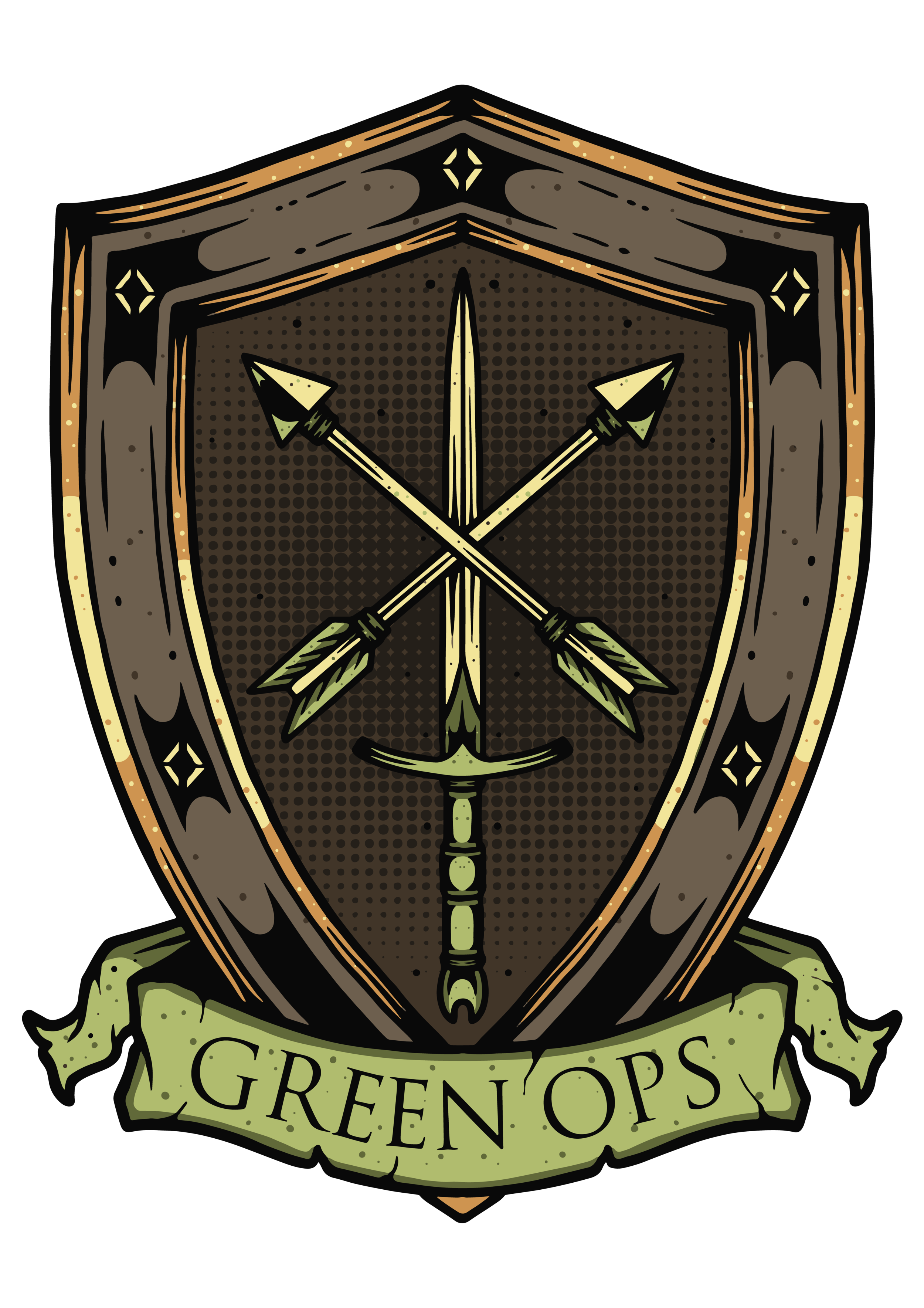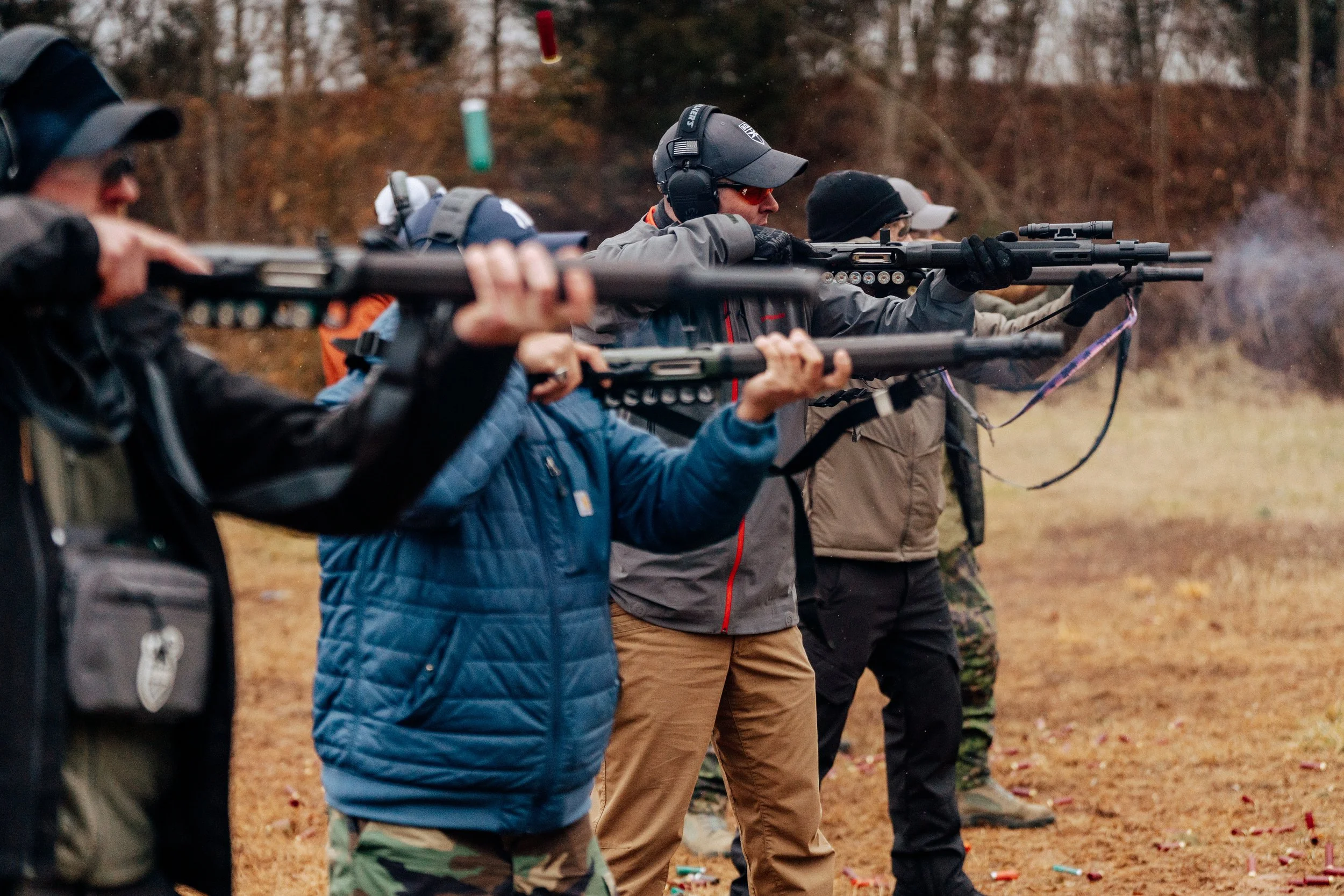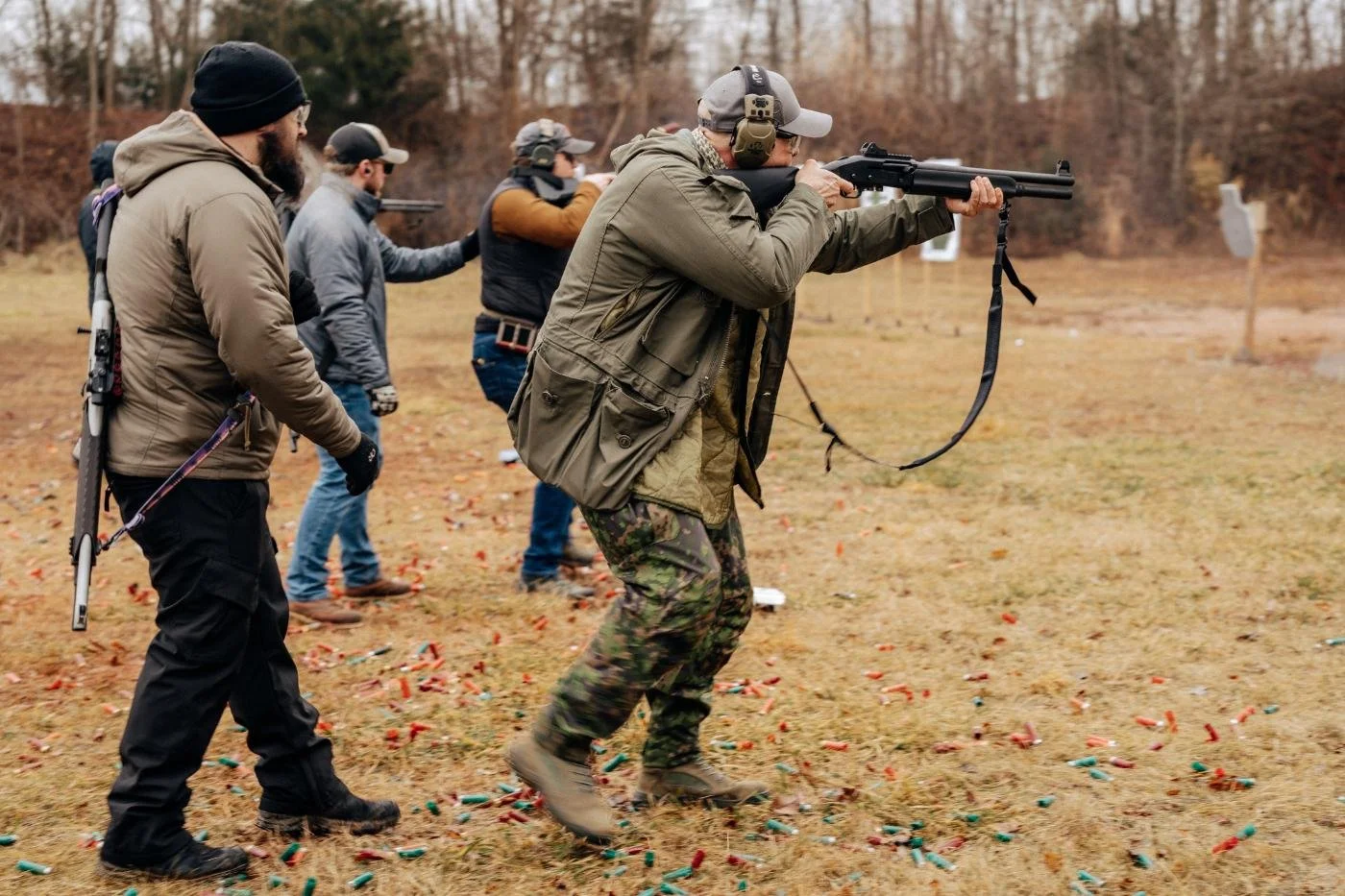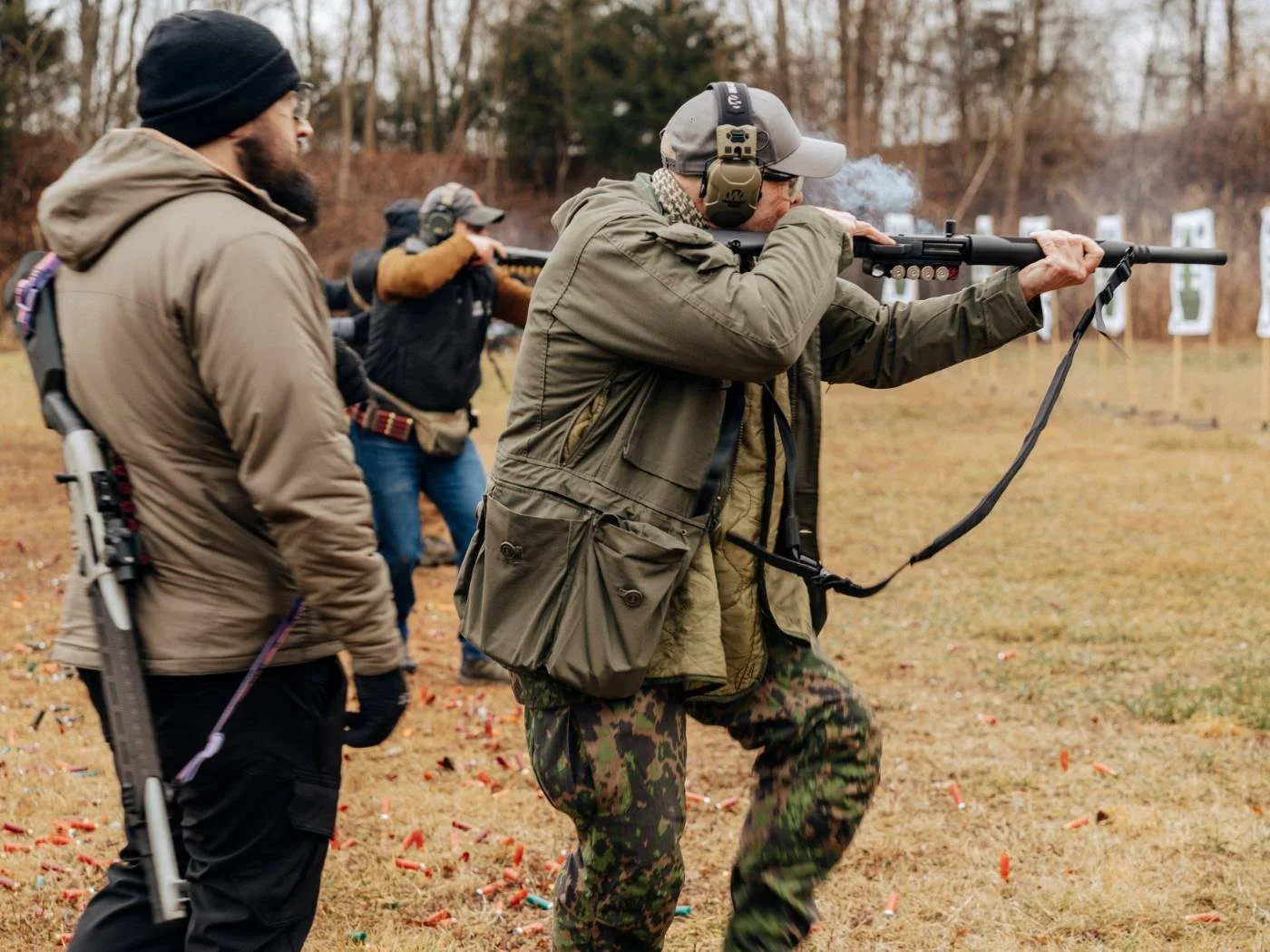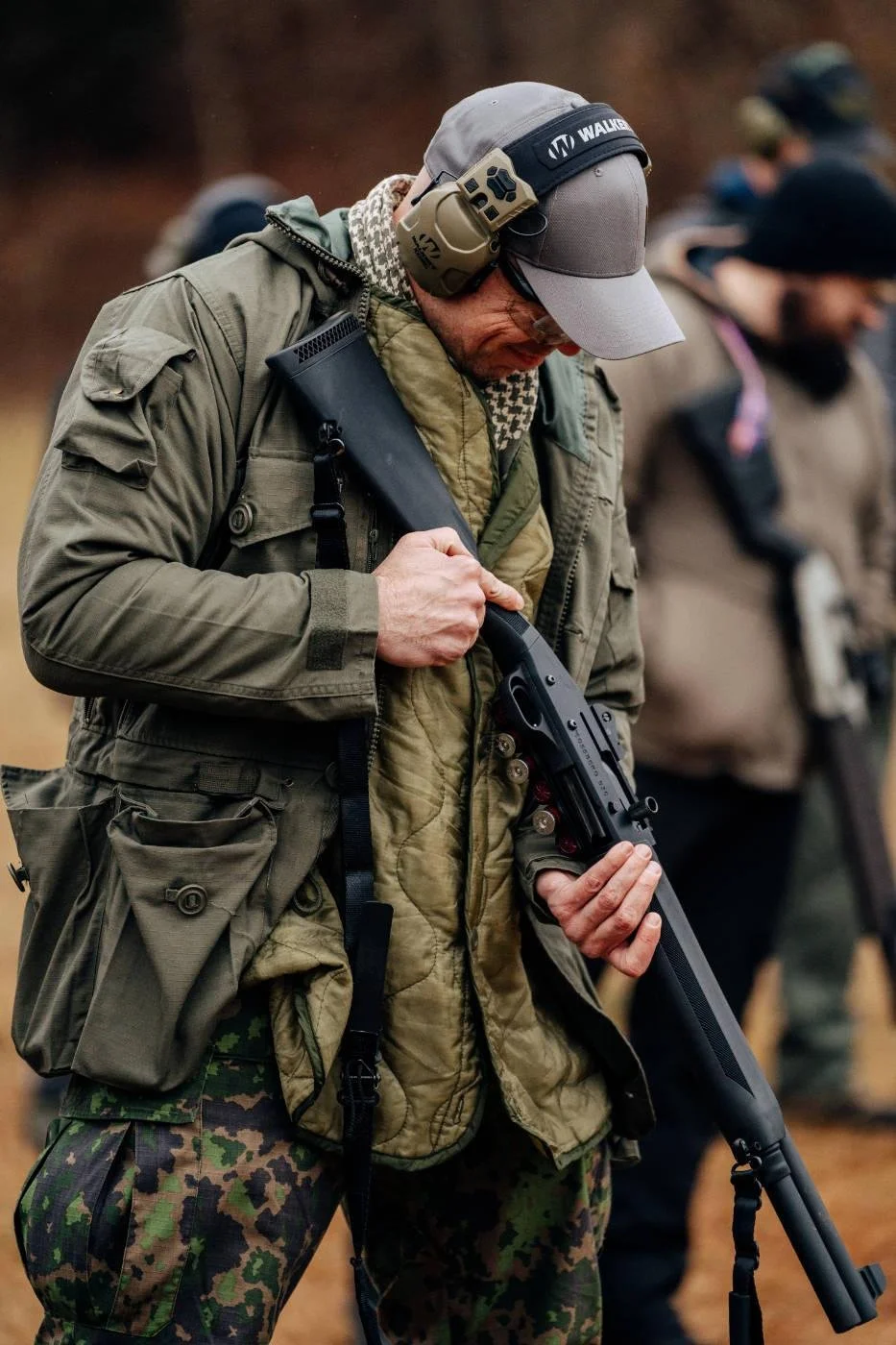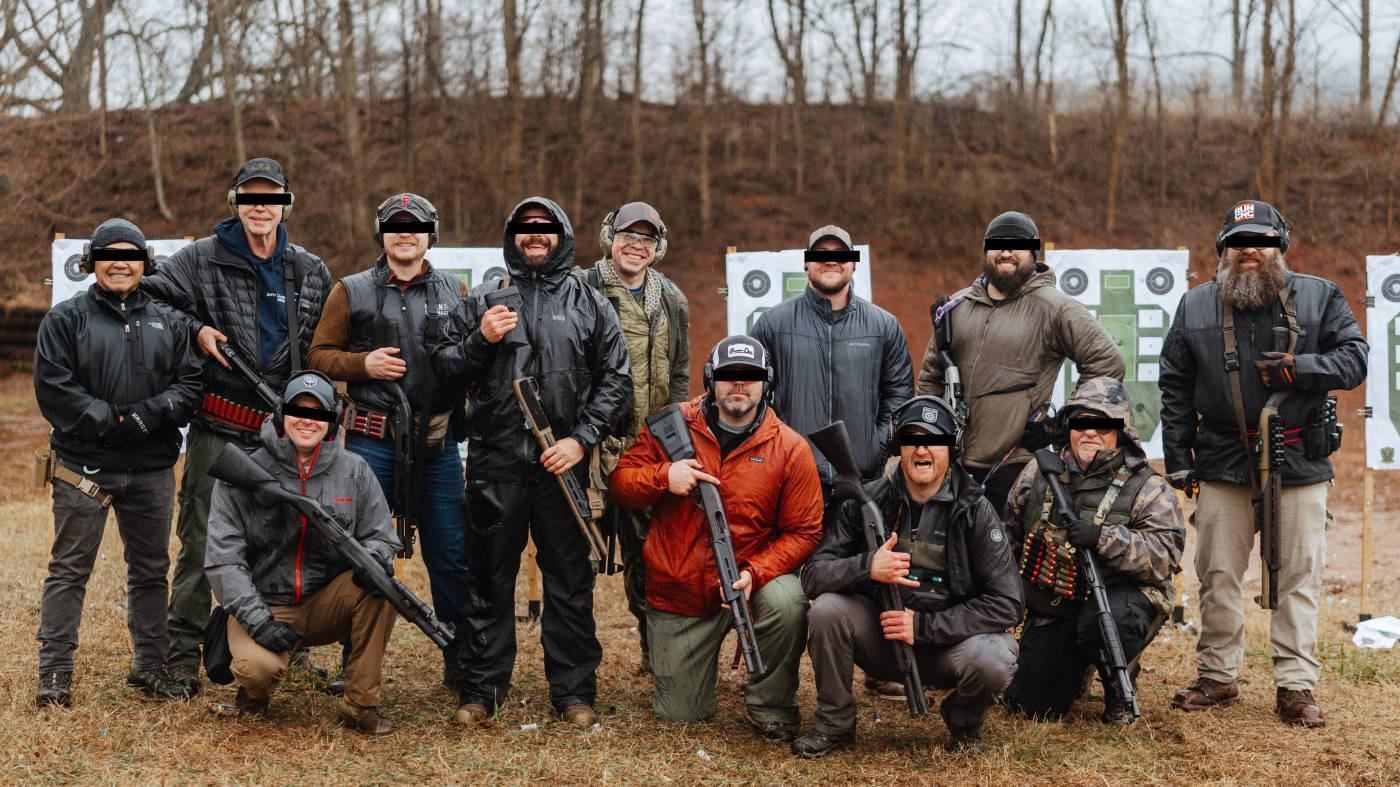You’re Either Shooting or Loading: Green Ops Shotgun AAR
By Ross Feb 08, 2025- Originally published at Everydaymarksman.co
When four students drop out of a scheduled class at the last minute there’s probably a good reason. In this case it wasn’t because of any issues with the people running the class. In fact, the team at Green Ops lived up to their well-deserved reputation when I attended their Defensive Shotgun class this past weekend. Instead, I’m fairly certain four people who were smarter than the rest of us just checked the weather and decided not to hang out in the rain while temps were in the mid-30s.
I’ll be straight with you: this was without a doubt Type 2 fun. But it was fun, in addition to being educational, not to mention a great opportunity to go spend a day with a bunch of like minded people. If you live near any of the Green Ops training locations in Virginia, North Carolina, or Texas I highly recommend you go tune up your shotgun skills with their cadre.
The Course Begins: Safety First
The day began with an in-depth safety brief, exactly the way you’d expect with any professional training organization. I appreciated the way the instructors took the time to give a detailed background of their training history, as well as taking the time to understand where each student was coming from and what they wanted out of the class.
They also spent considerable time on the safety brief itself; this wasn’t your typical “check the box” exercise. In addition to reviewing the Four Rules of gun safety, they checked whether any of the attendees had certified medical skills, then briefed a thorough plan for key personnel to either assist in treating any potential injuries, communicate with first responders, or herd the cats (all the rest of us) to ensure we didn’t slow down the process. Whenever an event starts like this I know I’m in for some quality training.
Diving Into the Scattergun
The instructors then gave us an excellent block of instruction on an overview of shotguns as a platform: why one might choose to select a shotgun over a pistol or carbine, pump vs semi-auto capabilities, how to set up home defense gun, ammunition types and limitations, and numerous other points that they built on and reinforced throughout the day.
Given the “classroom” environment was an overhang above some firing positions and almost all of us were still shivering, I suspect the instructors called an audible and moved us onto the range earlier than they might have otherwise to let us move our bodies a bit.
Out on the range they split us into two groups so we could double up on the limited firing positions. This also gave us the opportunity to observe others as they went through the various courses of fire. I always appreciate these split groups in blocks of instruction, as observing others gives me an external perspective on what I may be doing myself.
Given some of the challenges I had in this class, I was particularly thankful to see how others were going through the various drills, whether they were doing things well or poorly. That gave me some feedback I might not have achieved as quickly, which helped me build momentum toward the end of the day.
Personal Targets
My goal at these events is never to be the best performer on the range, but rather to be the most coachable person on the line. If I’d stated that out loud at the outset of the day I think the Green Ops team might have laughed at me halfway through the morning. They would demonstrate a new skill, and over and over I kept failing to perform those tasks they way they wanted us to do them.
Part of that was due to some equipment limitations I’d inadvertently induced with my shotgun setup. Everyone’s got excuses though, and most of my struggle was just the high mental load of trying to synthesize all the information they threw at us on a freezing, rainy day while operating the weapon platform I’m least familiar with.
All that said, they stuck with me throughout the day and never lost patience when I regressed in one aspect while incorporating a new skill. By the end of the day I’d completely turned things around and got in some outstanding reps on the range.
Training Outcomes
I doubt I can recall everything we did out there, given it was an intense 8-hour class. We spent the vast majority of that time learning skills, practicing what we’d just learned, then incorporating it into drills and courses of fire that took us just outside our comfort zones.
I’m going to reiterate yet again how thoroughly professional the Green Ops staff is. They designed the course of instruction in precisely the right way manner to teach and reinforce each sub-skill needed to run a shotgun in a defensive encounter. There was no excuse not to walk away feeling confident in one’s ability to defend themselves with a scattergun by the end of the day.
Patterning and Ammunition
We started the day by patterning the buckshot we brought, as well as at least one alternative load brought by another student. This let us all know if the defensive load we’d purchased would work at the distances we expected it to. Mine definitely did not; despite buying a brand name I wouldn’t trust all of my pellets to hit within the A-zone around 15 yards, which is the longest shot I might need to take in my house.
Luckily I was able to identify at least one other load that would work. The instructors also demonstrated the improvements Federal Flite Control provides for typical shotguns, and I’ll almost certainly test that next…if it’s ever in stock.
Feeding
We also learned multiple ways to load and reload the shotgun. If there’s a single takeaway I would stress from this class, it’s this: “When running a shotgun, if you’re not shooting you’re loading.” The instructors hit us with this during the classroom portion of the class and continued to hammer it in throughout the day’s events.
A shotgun gives you the option to make a devastating shot, but the trade-off is in how much more difficult it is to load and reload, particularly under stress. The solution, of course, is constantly feed ingthat hungry beast unless you’re actively engaging a target.
Recoil Management
Many of us have heard of the Push-Pull method to grip in order to reduce the shotgun’s recoil. You can learn how to do it from books or YouTube, but – as with many other skills – there are lots of subtle aspects you’re likely to miss without a professional to make on the spot corrections. I received several of those corrections when class started, and fewer and fewer throughout the day.
Finishing Up
As a culminating exercise, the instructors ran us through the brand new Green Ops shotgun qualification. The skill required to receive the Green Ops patch is quite high, but also attainable. I was nowhere near where I’d need to be in order to achieve it this first time out, but I want to.
While I’ve still got lots of room to improve, now I know enough to work on those deficiencies on my own. Speaking of which, after the end of that long, cold day on the range our trainers made sure we all knew the right way to reinforce those skills was with dry fire. Yet another indicator of the professionalism of the Green Ops team: they know what to teach, how to teach it, and how to enable shooters to maintain and improve their skills between sessions with the pros.
I’ll close with this: Green Ops should be toward the top of anyone’s list for excellent training. And training and practice are far more valuable than the best available weapon that spends its life as a safe queen. I’ll continue practicing my shotgun skills through the rest of this year, because I’d like to go back out and make another attempt at that Green Ops patch in a follow up class. And I was so impressed by the quality of training at this event that I’ll go back out there even if the weather is somehow worse than it was the first time.
ROSS
A Florida native, Ross enlisted in the Army after high school. He served as an infantryman in the Army’s 75th Ranger Regiment for three years prior to his acceptance to West Point. He deployed three times to Afghanistan and Iraq during the first years of the GWOT. After graduating from the Academy, Ross spent five additional years as an infantry officer with the First Cavalry Division, including another deployment to Iraq. These days Ross works a civilian job in the Northern Virginia suburbs, where he does his best to prepare for Scenario X with fitness, marksmanship, bushcraft, first aid training, and the occasional book.
